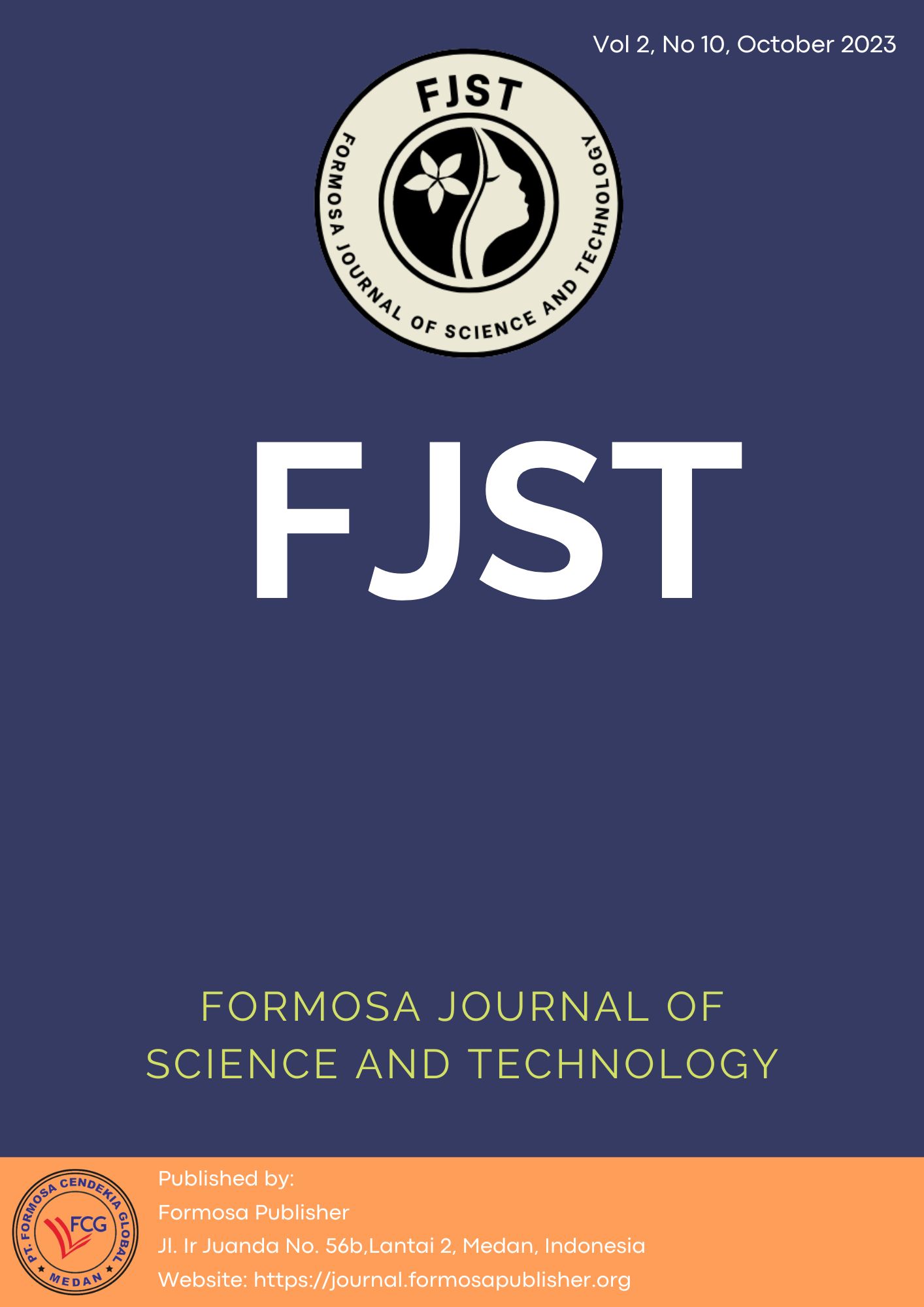Holistic Approach for Cancer Patients: Integration of Therapeutic Gardens and Person Centered Care (Literature Review)
DOI:
https://doi.org/10.55927/fjst.v2i10.6434Keywords:
Holistic Approach, Cancer PatientAbstract
The concept of Person Centered Care (PCC) is a revolutionary approach in the world of health care that emerged from a strong argumentative foundation. PCC firmly recognizes that patients are not simply passive objects in the care process, but have the unique potential to be actively involved in managing their own health. This is based on deep psychological theories, one of which is the "self-efficacy" theory put forward by Albert Bandura. The Ecological Health Model is an approach that views a person's health from a more comprehensive and scientific perspective. This model explains that a person's health is not only influenced by physical factors, but also by a number of complex and interrelated social, psychological and environmental factors. In this understanding of health, socioeconomic conditions, social support, physical environment, and psychological factors all play an important role. A holistic approach to cancer patients that combines therapeutic gardens and person-centered care can provide substantial benefits. However, it requires active participation from patients, designers, healthcare professionals, and perhaps family members, to create a space that is truly healing and meets the unique needs of each individual on their healing journey.
Downloads
References
Balick, M. J., & Cox, P. A. (1996). Plants, people, and culture: The science of ethnobotany. Scientific American Library.
Bandura, A. (1977). Self-efficacy: Toward a unifying theory of behavioral change. Psychological
Bandura, A. (2004). Health promotion by social cognitive means. Health Education & Behavior, 31(2), 143-164.
Bronfenbrenner, U. (1979). The ecology of human development: Experiments by nature and design. Harvard University Press.
Dr. Howard Frumkin, "Beyond Toxicology: Human Health and the Natural Environment," American Journal of Preventive Medicine, 2001.
Edward O. Wilson, "Biophilia: The Human Bond with Other Species," Harvard University Press, 1984.
Florence Williams, "The Nature Fix: Why Nature Makes Us Happier, Healthier, and More Creative," 2017.
Hibbard, J. H. (2004). Moving toward a more patient-centered health care delivery system. Health Affairs, 23(2), 24-25.
Holland, J. (1999). History of Psycho-oncology: Overcoming Attitudinal and Conceptual Barriers. Psychosomatic Medicine, 61(2), 179-189.
Janipour, B., Haghighi Khoshkhoo, A., & Taheri, M. R. (2021). Application of therapeutic landscape criteria and healing gardens in the design of hospital’s green space (Case study: Tehran Children's Medical Center). Iranian Journal of Horticultural Science, 52(2), 487-500. doi: 10.22059/ijhs.2021.307830.1828
Johnson, L. K., & Brown, S. M. (2022). Integrating Therapeutic Gardens and Person-Centered Care for Cancer Patients: A Promising Approach. Journal of Oncology Nursing, 29(4), 321-335.
Kaplan, R. (1995). The Restorative Benefits of Nature: Toward an Integrative Framework. Journal of Environmental Psychology, 15(3), 169-182.
Kaplan, R., & Kaplan, S. (1989). The Experience of Nature: A Psychological Perspective. Cambridge University Press.
Kellert, S. R. (2005). Building for Life: Designing and Understanding the Human-Nature Connection. Island Press.
Kitwood, T. (1997). Dementia reconsidered: The person comes first. Open University Press.
Knowles, M. S. (1980). The modern practice of adult education: From pedagogy to andragogy. Association Press.
Lopez, A. (2023). The Therapeutic Garden: Enhancing the Healing Environment. Journal of Therapeutic Landscapes, 45(3), 123-135.
Malchiodi, C. A. (2019). Art therapy and healthcare. In Handbook of art therapy (pp. 123-135). Guilford Publications.
McCormack, B., & McCance, T. (2017). Person-Centred Practice in Nursing and Health Care.
McDonough, W. (2002). Cradle to Cradle: Remaking the Way We Make Things. North Point Press.
Nieberler-Walker K, Desha C, Bosman C, Roiko A, Caldera S. (2023). Therapeutic Hospital Gardens: Literature Review and Working Definition. HERD: Health Environments Research & Design Journal.;0(0). doi:10.1177/19375867231187154
Polat, Ahmet & Güngör, Sertaç & Demir, Metin. (2017). The Design Principles of Therapeutic Gardens. Internatıonal Journal of Landscape Architecture Research. 1. 37-42.
Roger S. Ulrich, "View through a Window May Influence Recovery from Surgery," Science, Vol. 224, No. 4647, 1984, pp. 420-421.
Rogers, C. (1961). On Becoming a Person: A Therapist's View of Psychotherapy. Boston: Houghton Mifflin.
Rogers, C. R. (1951). Client-Centered Therapy: Its Current Practice, Implications, and Theory. Houghton Mifflin.
Rogers, C. R. (1957). The necessary and sufficient conditions of therapeutic personality change. Journal of Consulting Psychology, 21(2), 95-103.
Sivo, Michele Di and Balducci, Claudia. (2019). Patient-Centered Care Approach: Strategies for Healing Gardens. David Publishing Company https://www.davidpublisher.com/Public/uploads/Contribute/5e0174beee069.pdf
SJ, Han and M, Kim. (2018). Person-Centered Approach of Horticulture Therapy Program Improves Neurorehabilitation in Elderly. Gerontology & Geriatrics: Research. https://austinpublishinggroup.com/gerontology/fulltext/ggr-v4-id1036.pdf
Smith, A., & Johnson, B. (2019). The therapeutic garden: A multidisciplinary approach to garden-based horticulture programs. Routledge.
Smith, J. R., et al. (2021). Person-Centered Care in Oncology: Meeting the Unique Needs of Cancer Patients. Journal of Cancer Care, 18(2), 87-101.
Stewart, M., Brown, J. B., Donner, A., McWhinney, I. R., Oates, J., Weston, W. W., ... & Wells, K. B. (2000). The impact of patient-centered care on outcomes. Journal of Family Practice, 49(9), 796-804.
Thaneshwari, Thaneshwari & Kumari, Poonam & Sharma, Rishu & Sahare, H.A.. (2018). Therapeutic gardens in healthcare: A review. Annals of Biology. 34. 162-166.
Ulrich, R. S. (1984). View through a window may influence recovery from surgery. Science, 224(4647), 420-421.
Wahyudi, A., Iwan Trihapsoro, Listyo Yuwanto, Ratna Indrawati, Hisnindarsyah, & Buyung Nazeli. (2023). Patient and Family Engagement: The Secret Behind Quality Healthcare Services (Literature Review). East Asian Journal of Multidisciplinary Research, 2(9), 3645–3664. https://doi.org/10.55927/eajmr.v2i9.6136
Williams, F. (2017). The Nature Fix: Why Nature Makes Us Happier, Healthier, and More Creative. W. W. Norton & Company.
Wilson, E. O. (1984). Biophilia. Harvard University Press.
Yasukawa, Midori & Söderback, Ingrid. (2009). Horticultural Therapy Horticultural Therapy for the Cognitive Functioning of Elderly People Elderly People with Dementia. 10.1007/978-0-387-75424-6_46.
Yuwanto, Listyo. (2022). Forest Therapy: A Means of Psychological Recovery from Nature for Disaster Survivors. Diakses pada 10 Oktober 2023 melalui https://www.ubaya.ac.id/2022/02/21/forest-therapy-sarana-pemulihan-psikologis-dari-alam-bagi-penyintas
Downloads
Published
How to Cite
Issue
Section
License
Copyright (c) 2023 Ahyar Wahyudi, Listyo Yuwanto, Abdul Rofik

This work is licensed under a Creative Commons Attribution 4.0 International License.











.png)


















